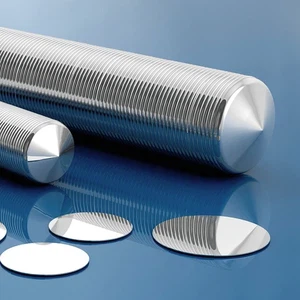When molten elemental silicon solidifies, silicon atoms are arranged in a three-dimensional long-range order in a diamond lattice to become single crystal silicon. Single crystal silicon has the physical properties of metalloid, and has weak conductivity. Its conductivity increases with the increase of temperature, and it has significant semiconductivity. Ultrapure single crystal silicon is an intrinsic semiconductor. Doping a small amount of group IIIA elements, such as boron, in ultra-pure single crystal silicon can increase its electrical conductivity and form a p-type silicon semiconductor; if doping a small amount of group VA elements, such as phosphorus or arsenic, can also increase the electrical conductivity. An n-type silicon semiconductor is formed. The method of making single crystal silicon is usually to make polycrystalline silicon or amorphous silicon first, and then use Czochralski method or suspension zone melting method to grow rod-shaped single crystal silicon from the melt. Monocrystalline silicon is mainly used to make semiconductor components. Silicon crystalline silicon is dark blue, very brittle, and is a typical semiconductor. Chemical properties are very stable. At room temperature, it is difficult to react with other substances except hydrogen fluoride.
Strwythur O A Sengl Grisial Silicon Wafer
Jul 20, 2023Gadewch neges









